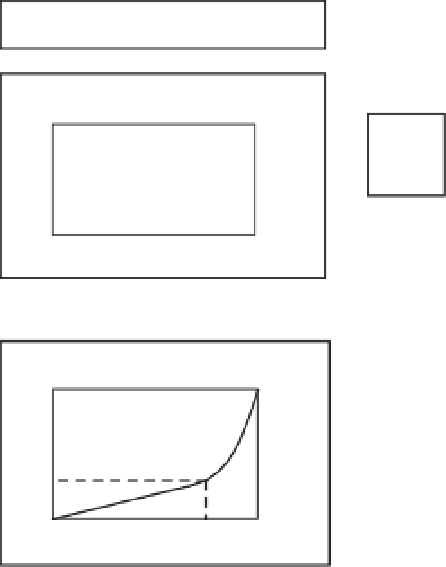Geoscience Reference
In-Depth Information
3
N
2
Land
Cover
Class
.
Bare Soil
4
P
E
c
Canopy Store
Upper Layer Store
E
i
m
h (t)
1
Q
1
1
local deficit = i - i
o
i
t
o
A
s
A
A
Q
12
E
Lower Layer Store
2
h (t)
2
Q
Q
m
2
Q
2
t
Q
c
0
0
W
C
W
m
Lower Layer Storage
Q(t)
Figure B2.2.1
Schematic diagram of the VIC-2L model (after Liang
et al.
, 1994, with kind permission of
the American Geophysical Union).
The lower storage is recharged by this drainage from the upper layer and loses water accord-
ing to a baseflow function that is linear for low storage values but becomes nonlinear at higher
storage values so as “to represent situations where substantial subsurface stormflow occurs”.
The function has four parameter values: the maximum water content in the lower store,
W
m
,
the maximum flow rate from the lower store,
Q
m
, and the storage and flow rate at the upper
limit of the linear part of the function,
W
c
and
Q
c
.
Three types of evapotranspiration are included in the model: evaporation from a wet vegeta-
tion canopy, transpiration from the vegetation and evaporation from bare soil. The interception
capacity of the canopy is taken as a linear function of leaf area index (LAI) with a parame-
ter
K
L
.
The evapotranspiration component uses a Penman-Monteith formulation (see Box 3.2)
which also requires specification of aerodynamic and architectural resistance parameters,
r
a
and
r
o
, and canopy resistance. Canopy resistance is allowed to vary as a simple function of
soil moisture, with five parameters: the minimum value of canopy resistance when water is not
limiting,
r
oC
, the moisture content at which transpiration starts to decline as a result of water



























